#india ranking in world
Explore tagged Tumblr posts
Text
#gdp of india#india gdp 2022#indian gdp in trillion#india gdp 2022 in trillion#world gdp ranking 2022#india economy ranking#india ranking in world
1 note
·
View note
Text
दुनिया की सबसे ताकतवर वायु सेना की रैंकिंग में भारत को मिला चौथा स्थान, अमेरिका ने किया टॉप; जानें पाकिस्तान का हाल
#News दुनिया की सबसे ताकतवर वायु सेना की रैंकिंग में भारत को मिला चौथा स्थान, अमेरिका ने किया टॉप; जानें पाकिस्तान का हाल
Washington News: दुनिया की 10 सबसे ताकतवर वायु सेनाओं की रैंकिंग जारी हो गई है। ग्लोबलफायरपावर डॉट कॉम वेबसाइट ने इसे प्रकाशित किया है। हाल की प्रकाशित रिपोर्ट में रैकिंग के देशों के पास मौजूद लड़ाकू जेट, हेलीकॉप्टर और सहायक विमानों समेत उनके एयरक्राफ्ट की सूची को आधार बनाया गया है। खास बात है कि भारत की वायु सेना का नाम दुनिया की टॉप-5 ताकतवर एयरफोर्स में है। इसके साथ ही भारत के दुश्मन देश…
0 notes
Text
Low-Cost Digital Marketing Services In World: Excellent Knowledge in India
In the day of the digital-first universe, a business's sustained success hinges on a dominant online presence. Digital marketing services facilitate the achievement of the desired purposes within the frame of reference 100% of the time, irrespective of whether a business is a fledgling or well-established enterprise. The advantages of partnering with low-cost digital marketing services in world are elaborated on in this blog alongside cost-effective digital marketing services around the globe. How Ranking Rapid, a digital marketing agency, assists you in growing your business, is interesting to know.
Low-cost digital Marketing Services for All Businesses
Affordability is critical if a strategy is meant to work for start-ups and small businesses poised for explosive growth in the near term. Affordable digital marketing services ensure custom solutions will deliver results within prescribed budgets. Services like:
Search Engine Optimization (SEO): An increase in organic traffic to websites with the help of techniques that optimize and improve ranking on search engine results pages.
Social media marketing: This means running a campaign on a social media network like Facebook, Instagram, or LinkedIn to get new customers.
Content Marketing: Use quality blogs, videos, and infographics to engage with your target audience through content marketing.
Pay-Per-Click Advertising: instant traffic comes from targeted ads.
All companies are made capable of competing and running a digital business with these services without going broke.

Affordable Digital Marketing Services Worldwide
Globalization and technological advancement lay the ground for low-cost digital marketing services in world. Businesses can use some cheap yet effective means, such as:
Global SEO Campaigns: With localized strategies, go for international audiences.
Email Marketing: Engage your clients with personalized email campaigns.
Influencer Partnerships: Collaborate with micro-influencers for affordable promotions.
Local SEO Optimization: Own local search results and draw nearby customers.
By working with global professionals, businesses can now achieve amazing results at a great price.
Digital Marketing Service Provider at High Rates in India
India has become the global leader in digital marketing services, offering world-class expertise at competitive rates. A high-rate digital marketing services company in India gives:
Advanced Analytics and SEO Solutions: Keyword research, backlink strategies, and competitor analysis.
AI-Powered Marketing Tools: Implementing next-gen technology to predict trends and maximize ROI.
Customized Marketing Campaigns: Sufficiently adjusted by the marketing team to fit clients’ individual business needs.
E-commerce Optimization: Build conversion on platforms like Shopify and Magento.
Having an Indian agency for assistance makes good services active and available for the business world for fast services.
Ranking Rapid - Digital Marketing Agency-best Option
Ranking Rapid-Digital Marketing Agency is a trusted parter in any digital marketing undertaking. Some details:
Competitive and Customized Solutions: Our services are designed according to your company's goals and the budgets it can afford.
Global Know-How: Our team of experienced experts will give you quality work in every field globally.
Every Service Provided: Basically, any services you need like content marketing, social media, PPC, and SEO.
Track Record: Having a proven track record of rapid business growth and visibility increases.
Whether you intend to find affordable services, worldwide low-cost solutions, or high-end expertise, Ranking Rapid is your avenue to it.
Frequently Asked Questions Concerning Digital Marketing Services
1. What are some reasonably priced digital marketing services?
SEO, social media management, and inexpensive PPC campaigns are a few examples of digital marketing services that are reasonably priced for expanding companies.
2. What advantages might reasonably priced digital marketing services offer my company?
Low-cost services enable companies to grow their clientele for more traffic and brand recognition at a low cost.
3. Why Should One Select an Indian Digital Marketing Agency?
Impressive experience at reasonable rates, top-notch strategies, advanced technology, and flexibility to meet various business needs.
4. What Is the Importance of Ranking Rapid in Digital Marketing?
Ranking Rapid, with a team of proven experts and results as evidence, provides effective digital marketing solutions at an excellent cost tailored to meet the defined goals of your business.
Ending Remarks
Whether you intend to know about budgeting digital marketing services, seek low-cost digital marketing services worldwide, or work with one of the high-rate digital marketing services companies in India, with proper strategies, your business will get on full throttle. Enjoy out-ranking your competitors with Ranking Rapid - Digital Marketing Agency!
Source Url: https://mansi0613.wordpress.com/2025/01/18/low-cost-digital-marketing-servicesin-world-excellent-knowledge-in-india/
#affordable digital marketing services#high rate digital marketing services company in India#low cost digital marketing services in world#Ranking Rapid
0 notes
Text
#Best MBA Colleges in India#Best MBA colleges in world for Indian students#IIRF MBA Ranking 2025#Top 100 MBA Colleges in world#Top 20 MBA Colleges in the World#Top 50 MBA Colleges in the World#Top business schools in the world#Top MBA Colleges in India#Top MBA Colleges in the World#Top MBA Colleges in the World 2025
0 notes
Text
#world bank business#world bank ranking#india ranking 2018#indian economy#india business ranking#financial reporting#india business world ranking
0 notes
Text
#ICC#BCCI#cricket team#cricket news#indian cricket team#cricket in india#cricket#ODI Ranking#Ranking#australia cricket#india cricket#sports#ipl news#odi cricket#odi series#odi world cup#ind#t20
0 notes
Text
#Daily Current Affairs Capsules 11th December 2023#Daily Current Affairs Capsules#Tribal veteran Vishnu Deo Sai selected as the new Chhattisgarh CM#LA Film Critics Association Awards 2023#VINBAX-2023#PM launches ‘Viksit Bharat @2047: Voice of Youth’#27th WAIPA World Investment Conference#Three pillars of the second phase of the India - Sweden LeadIT 2.0#Mohan Yadav is the newly elected Chief Minister of Madhya Pradesh#Naye Bharat Ka Samveda#NITI Aayog’s Inaugural Delta Rankings
0 notes
Text
Fantasy Guide to Building A Culture

Culture is defined by a collection of morals, ethics, traditions, customs and behaviours shared by a group of people.
Hierarchy and Social Structures

Within every culture, there is a hierarchy. Hierarchies are an important part of any culture, usually do ingrained that one within the culture wouldn't even question it. Hierarchy can be established either by age, gender or wealth and could even determine roles within their society. Sometimes hierarchy can may be oppressive and rigid whilst other times, ranks can intermingle without trouble. You should consider how these different ranks interact with one another and whether there are any special gestures or acts of deference one must pay to those higher than them. For example, the Khasi people of Meghalaya (Northern India), are strictly matrillineal. Women run the households, inheritance runs through the female line, and the men of the culture typically defer to their mothers and wives. Here are a few questions to consider:
How is a leader determined within the culture as a whole and the family unit?
Is the culture matriarchal? Patriarchal? Or does gender even matter?
How would one recognise the different ranks?
How would one act around somebody higher ranking? How would somebody he expected to act around somebody lower ranking?
Can one move socially? If not, why? If so, how?
Traditions and Customs

Traditions are a staple in any culture. These can be gestures or living life a certain way or to the way a certain person should look. Traditions are a personal detail to culture, they are what make it important. Tradition can dictate how one should keep their home, run their family, take care of their appearance, act in public and even determine relationship. Tradition can also be a double edged sword. Traditions can also be restrictive and allow a culture to push away a former member if they do not adhere to them, eg Traditional expectations of chastity led to thousands of Irish women being imprisoned at the Magdelene Laundries. Customs could be anything from how one treats another, to how they greet someone.
How important is tradition?
What are some rituals your culture undertakes?
What are some traditional values in your world? Does it effect daily life?
Are there any traditions that determine one's status?
Values and Opinions
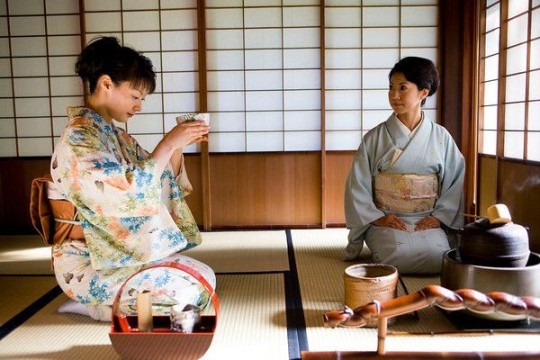
Values and Opinions are the bread and butter of any culture. This is the way your culture sees the world and how they approach different life hurdles. These may differ with other cultures and be considered odd to outsiders, what one culture may value another may not and what opinion another holds, one may not. There will be historical and traditional reasons to why these values and opinions are held. Cultures usually have a paragon to which they hold their members to, a list of characteristics that they expect one to if not adhere to then aspire to. The Yoruba people value honesty, hard work, courage and integrity. Here are some questions to consider?
How important are these ethics and core values? Could somebody be ostracised for not living up to them?
What are some morals that clash with other cultures?
What does your culture precieved to be right? Or wrong?
What are some opinions that are considered to be taboo in your culture? Why?
Dress Code

For many cultures, the way somebody dresses can be important. History and ethics can effect how one is meant to be dressed such as an expectation of chastity, can impose strict modesty. While other cultures, put more importance on details, the different sorts of clothes worn and when or what colour one might wear. The Palestinian people (من النهر إلى البحر ، قد يكونون أحرارا) denoted different family ties, marriage status and wealth by the embroidery and detailing on their thoub.
Are there traditional clothes for your world? Are they something somebody wears on a daily basis or just on occasion?
Are there any rules around what people can wear?
What would be considered formal dress? Casual dress?
What would happen if somebody wore the wrong clothes to an event?
Language

Language can also be ingrained as part of a Culture. It can be a specific way one speaks or a an entirely different language. For example, in the Southern States of America, one can engage in a sort of double talk, saying something that sounds sweet whilst delivering something pointed. Bless their heart. I have a post on creating your own language here.
Arts, Music and Craft

Many cultures are known for different styles of dance, their artwork and crafts. Art is a great part of culture, a way for people to express themselves and their culture in art form. Dance can be an integral part of culture, such as céilí dance in Ireland or the Polka in the Czech Republic. Handicrafts could also be important in culture, such as knitting in Scottish culture and Hebron glass in Palestine. Music is also close to culture, from traditional kinds of singing such as the White Voice in Ukraine and the playing of certain instruments such as the mvet.
Food and Diet

The way a culture prepares or intakes or treats certain foods are important to a culture. In some cultures, there is a diet yo adhere to, certain foods are completely banned. With Jewish culture, pork is prohibited along with fish such as sturgeon, along with shellfish and certain fowl. Meat must also be prepared in a certain way and animal byproducts such as dairy, must never be created or even eaten around this meat. This is known as kosher. The way one consumes food is also important to culture. In some cultures, only certain people may eat together. Some cultures place important on how food is eaten. In Nigerian culture, the oldest guests are served first usually the men before the women. In Japanese culture, one must say 'itadakimasu' (I recieve) before eating. Culture may also include fasting, periods of time one doesn't intake food for a specific reason.
What are some traditional dishes in your world?
What would be a basic diet for the common man?
What's considered a delicacy?
Is there a societal difference in diet? What are the factors that effect diet between classes?
Is there any influence from other cuisines? If not, why not? If so, to what extent?
What would a typical breakfast contain?
What meals are served during the day?
What's considered a comfort food or drink?
Are there any restrictions on who can eat what or when?
Are there any banned foods?
What stance does your world take on alcohol? Is it legal? Can anybody consume it?
Are there any dining customs? Are traditions?
Is there a difference in formal meals or casual meals? If so, what's involved?
Are there any gestures or actions unacceptable at the dinner table?
How are guests treated at meals? If they are given deference, how so?
#Fantasy Guide to Building A Culture#As promised#If I fail my German exam I'm blaming ye#Culture#Building a culture#Fantasy Guide#WorldBuilding#WorldBuilding guide#WorldBuilding help#Writing help#writing#writeblr#writing resources#writing reference#writing advice#ask answered questions#writers#writing advice writing resources#spilled ink#ask answered
10K notes
·
View notes
Text
0 notes
Text








Muslins (cotton fabrics) made in India for the European market in the late 18th and early 19th centuries.
Fabrics designed to be sold and made up in Europe featured a relatively subdued colour palette, distinct from those intended for sale locally, or in Thailand or Indonesia. They were mostly naturalistic florals on white or cream grounds. The designs were block-printed or hand-painted; sometimes, some elements were painted and others embroidered (as in images five and eight).
Block printing uses hand-carved wooden blocks, which are then painted and pressed onto a length of fabric repeatedly to form a design. Each colour and design element requires a separate block.

Printing block of carved wood, India, 19th century
Beverly Lemire, a scholar who writes a lot about textiles and the production of consumer tastes and markets in Europe in this period, writes:
Textiles played a crucial role in defining gender, rank, and race in British imperial expansion during the long eighteenth century. This period saw an emphasis on whiteness in skin and cloth, symbolizing social status and racial hierarchy, with laundering, largely performed by low-ranked and racialized women, maintaining pristine garments representing social “whiteness.” Everyday clothing, its care, and the opulent societal lifestyle of the elite, characterized by events such as masquerade balls, upheld the imperial ethos of race and reinforced social hierarchies. A critical history of empire must examine fabrics and their use, as well as the motivations behind material whiteness. [Empire and the Fashioning of Whiteness: Im/Material Culture in the British Atlantic World, c. 1660–1820]
[Source and more information on fabric # one / two / three / four / five / six / seven / eight]
87 notes
·
View notes
Note
Man, the Russia/Ukraine war has led to a lot of terrible takes from far leftists. I have a mutual from Brazil, a self identified socialist, who is convinced that Ukraine is full of nazis. While they don't support Russia, they questioned why they have to be "pro-Ukraine" or "pro-Russia". They call Ukraine a "nazi hole" but call Russia merely "fascist". Am I wrong in thinking that they've been influenced by Russian propaganda? I know Ukraine does have a nazi/far right problem, but so does the US? And most European countries? idk they strongly hate the US/US government too, and it seems to create some kind of brainrot. at least they don't blindly support China or Russia like tankies do (nor identify with them), but it's still frustrating to take a neutral position on a pretty black and white situation.
I don't want to confront them 1) cause I'm not the type to argue over serious things like this and this may break our long friendship and 2) I'm not super educated on the nazi situation in Ukraine.
Anyway thank you for letting me rant in your inbox.
Yes, Russia has specifically focused its propaganda efforts on Latin America, Africa, and other regions that HAVE suffered from Western/European/American imperialism and are thus predisposed to take the worst view of them/believe that this situation is their fault somehow. This is similar to what the USSR did in newly postcolonial Africa in the 1960s and 1970s, positing themselves as offering the shared hand of communist brotherhood from Western oppressors. Because of more recent events like the invasion of Iraq, which was fully as unjustified as the invasion of Ukraine, Russian propagandists and their eager tankie/leftist foot soldiers have also got a lot of mileage out of "whataboutism." This is likewise an old Soviet propaganda technique designed to deflect any criticism of the actual situation by disingenuously asking "what about this other one!!!"
Likewise, the idea that Ukraine has a "Nazi problem" is itself propaganda. In the last election, far-right/Nazi-identified parties won barely 2% of the vote and AFAIK, no seats at all in the Verkhovna Rada (Ukrainian parliament). This is far lower than the nearly half of the USA voting for the far-right/Nazi-sympathetic Republican Party, and as noted, the far right elements in the UK and Europe. The idea that Ukraine is "full of Nazis" (with a Jewish president who just celebrated iftar with the Ukrainian Muslims/Crimean Tatars during Ramadan and instituted observance of Muslim holidays nationwide, very Nazi of him) is a line used by Russian propagandists to "justify" their attack and appeal to national memories of the Great Patriotic War (World War II) and the struggle against the Nazis, which is the central cultural grievance/memory in modern Russia. The Putin regime has referred to anyone they don't like, but especially the Ukrainians, as "Nazis" for a long time now, so it's supposedly their holy duty to kill them/commit ethnic cleansing/forcibly reunite the "fraternal" people of "Little Russia," as Ukraine has been called since the 17th century, with "Great Russia." And yeah, no.
Because the West and Europe has been pretty solidly on Ukraine's side, Russia has therefore cultivated countries like China, India, Brazil, etc, who have all suffered from Western interference and are looking to move into the first rank of global superpowers. This is, as noted, similar to the competing systems of influence built during the Cold War, but it also relies on much deeper Russian grievances that go back to the medieval era. Anybody who knows a thing about actual Russian history would therefore know that every single word it says about the Ukraine situation is a lie, but because that lie is useful for many other countries and fits into their own understanding of themselves, it is easy to repeat and act like it's a so-called superior moral position. This is also why US/American tankies so eagerly lap up Russian propaganda, because it plays into their moral sense of themselves as far better than the rest of the West and "righteously" discovering that the West is responsible for all the evil in the world etc etc. While non-Westerners are just helpless misunderstood puppets with no real agency or ability to make complex choices. This totally makes sense!!!
#anonymous#ask#russia ukraine war#russian history#as ever tankies are the fucking absolute worst and wrong about everything
667 notes
·
View notes
Text

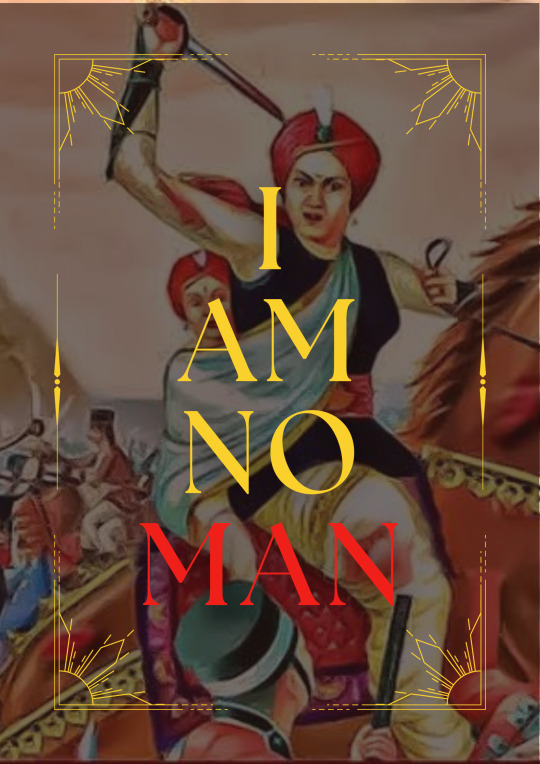
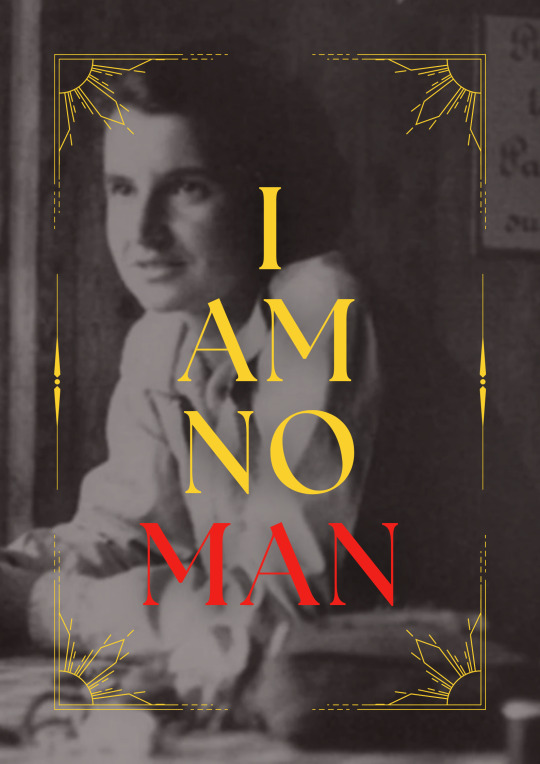





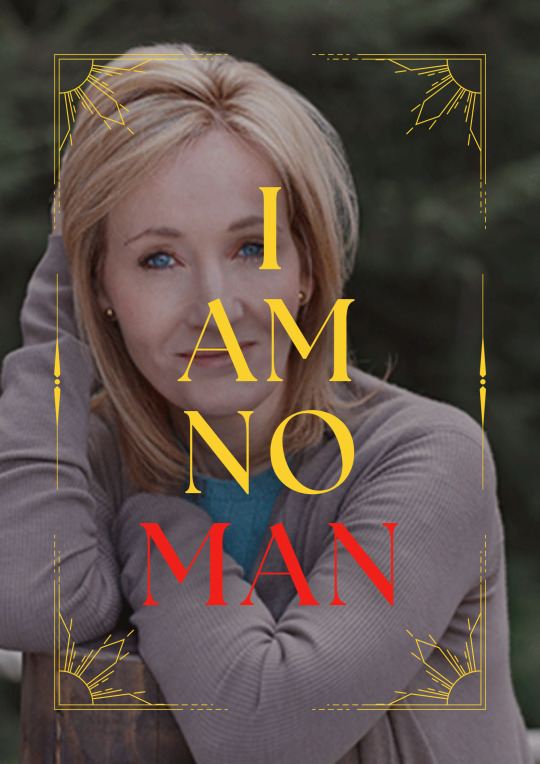
Throughout history, women have left an undeniable impact on society with their hard work, creativity, and dedication to progress. Unfortunately, their accomplishments have often gone unnoticed, been undervalued, or even stolen. Despite these challenges, brave women of today continue to push boundaries, break barriers, and pave the way for a more fair and equal world. It's our duty to keep going, so that future generations of women can inherit a kinder, more just, and supportive world. By following in the footsteps of the incredible women who came before us, we can create a world where every woman can flourish and succeed, and where their contributions are recognized and celebrated.
Joan of Arc is a patron saint of France, honored as a defender of the French nation for her role in the siege of Orléans and her insistence on the coronation of Charles VII of France during the Hundred Years' War. Claiming to be acting under divine guidance, she became a military leader who transcended gender roles and gained recognition as a savior of France. She was put on trial by Bishop Pierre Cauchon on accusations of heresy, which included blaspheming by wearing men's clothes, acting upon visions that were demonic, and refusing to submit her words and deeds to the judgment of the church. She was declared guilty and burned at the stake on 30 May 1431, aged about nineteen.
Rani Lakshmibai was the Maharani consort of the princely state of Jhansi from 1843 to 1853. She was one of the leading figures in the Indian Rebellion of 1857 became a symbol of resistance to the British rule in India for Indian nationalists. When the Maharaja died in 1853, the British East India Company under Governor-General Lord Dalhousie refused to recognize the claim of his adpoted heir and annexed Jhansi under the Doctrine of Lapse. She rode into battle with her infant son strapped to her back, and died in June 1858 after being mortally wounded during the British counterattack at Gwalior.
Rosalind Franklin was a British chemist and X-ray crystallographer whose work was instrumental in the discovery of the structure of DNA. Her contributions were largely overlooked by her male colleagues, James Watson and Francis Crick, who used her data without her permission or acknowledgement. This theft of her intellectual property and erasure of her contributions is a prime example of the systemic sexism that has historically plagued the scientific community.
Hedy Lamarr was an Austrian-American actress and inventor who co-invented a frequency-hopping spread spectrum technology during World War II that was used to guide torpedoes. However, her contributions were largely ignored and dismissed by male engineers and the military at the time. It was only later in life that she received recognition for her scientific achievements.
Emma Weyant is an American competitive swimmer. She was the US national champion at the individual medley. She qualified for the 2020 Olympic Games in the 400m individual medley and won the silver medal in this event. Weyant finished second in the 500-yard freestyle at the 2022 NCAA Division I Women's Swimming and Diving Championships. She was beaten by William (Lia) Thomas, a fetishist, who when competing as a member of the Penn men's team, which was 2018-19, ranked 554th in the 200 freestyle, 65th in the 500 freestyle and 32nd in the 1650 freestyle. Weyant is the fastest swimmer in the 500-yard freestyle and had her position stolen by a man.
Maryna Viazovska is a Ukrainian mathematician who made a breakthrough in sphere packing, solving the centuries-old mathematical problem known as the densest packing of spheres in dimensions 8 and 24. She was awarded the Fields Medal in July 2022, making her the second woman (after Maryam Mirzakhani), the second person born in the Ukrainian SSR and the first with a degree from a Ukrainian university to ever receive it.
Hannie Schaft was a Dutch resistance fighter during World War II who played a crucial role in the resistance movement against Nazi occupation. Schaft was a former university student who dropped out because she refused to sign a pledge of loyalty to Germany. Nazis arrested and killed her in 1945, just three weeks before the war ended in Europe. According to lore, Schaft’s last words were, “I’m a better shot,” after initially only being wounded by her executioner.
Shakuntala Devi was an Indian mathematician and mental calculator who was known as the "Human Computer" for her exceptional ability to perform complex mathematical calculations in her head. Her extraordinary abilities earned her a place in the 1982 Guinness Book of Records. Her lesser known achievement is that in 1977 she wrote what is considered to be the first book in India on homosexuality titled “The World of Homosexuals.”
J. K. Rowling is a British author and philanthropist. She wrote Harry Potter, a seven-volume children's fantasy series published from 1997 to 2007. Known for her philanthropy, she was doxxed and harassed after coming out with support for women's and gay rights in 2020. Rowling secretly donated hundreds of thousands of pounds to save 100 female lawyers and their families facing murder in Afghanistan. In 2022, she funded a women's only rape shelter in Edinburgh.
#this post was inspired by me being absolutely sick of trans activists claiming that joan of arc/rani lakshmibai/insert literally any other#strong woman#is actually a trans man#they were no man at all#women have been brave and strong and amazing throughout history#and they still are#if only you'd get your head out of your ass to take a look#radical feminism#radblr#terf#trans#misogny#i am no man
693 notes
·
View notes
Note
Hi there. Idk if this question has been asked before, but where do they find the fabric for the mandarin coat?
I'd say there are as many answers as there are versions of the costume. But some pointers:
Many of the early versions were made with partly antique embroidered textiles from the Qing dynasty. These were a popular collector's item in the 19th and 20th century, to the point where some of them were never intended for use in China, they were made as souvenirs. The original design by Maria Bjørnson suggests antique Chinese fabrics, with a hem showing the classic water-and-mountain motif, the collar being a cloud collar usually seen in women's attires, and the hat a decorated winter hat.

Even if all these costumes are made from scratch rather than bought, I thought it could be interesting to compare it to a similar authentic Chinese robe - without the collar - dated to the 1890s and sold by Augusta Auctions some years ago:

This robe has a badge - an insignia of rank and position of a Mandarin official in the Qing dynasty. These were used both on the chest and back, and the bird or otherwise animal told onlookers all they needed to know, if the person was a civil or military employee, and how high up in the system they were. The badge is not featured in Bjørnson's design, but it has showed up in a few costumes. Maybe most proninently in Michael Crawford's original West End costume, which Bjørnson would have supervised:

To my eye it looks like many of the elder costumes (up until c. 2005) used a lot of antique or vintage fabrics, but used on a new base. Details to look for is distinct gold couching, re-used badges, special dragon embroideres, antique collars and tabards, fringework etc. I am quite convinced some of these are antique or vintage details, like the China blue tabard with water and mountain motif used by John Owen-Jones in West End c. 2002:
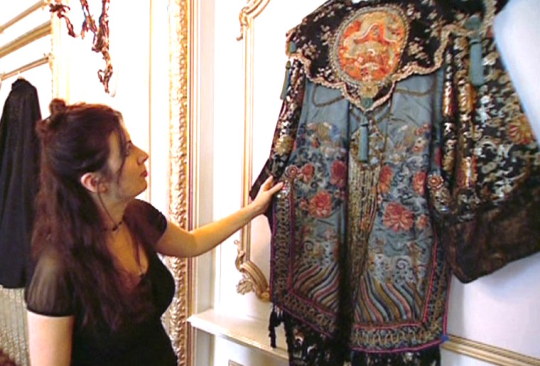
The cuff and details on one of the original Australian robes, and continued to shine in the World Tour up until 2015 or so:
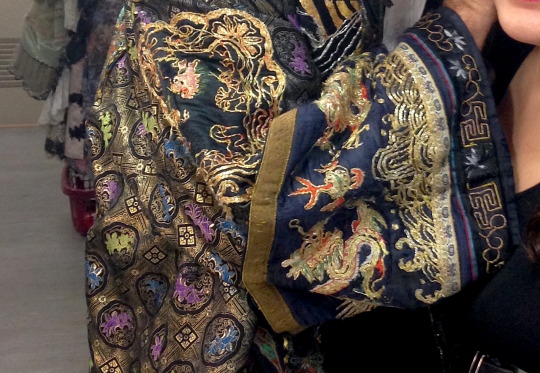
The tabard of the Swedish/Danish version, first made in 1989 and still in use in 2019 (maybe not too visible in the stage photo, but definitely when seen up close backstage!):


As a contrast, newer costumes tends to be brassier and bigger, with less embroidery and more appliquées and trims. It looks to me like they mostly rely on new fabrics and materials, maybe with some elements of elder embroidery. This collar made for Ben Lewis in West End is a good example:
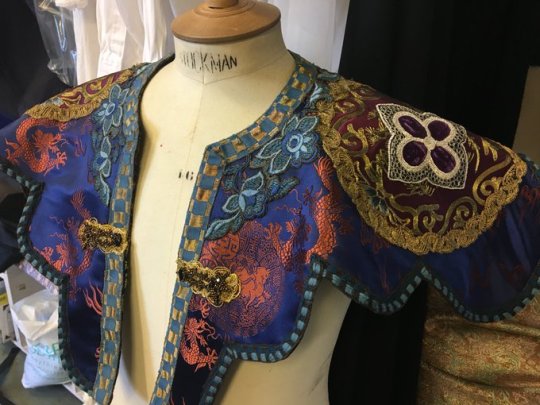
And the recent German version, here seen on Mathias Edenborn in Hamburg. It's a costume I got to study up close and I couldn't spot any particular details that looked old:

And this Broadway robe with what looks like a very new firefly pattern brocade and embroidered gold trims appliquéed on:

So why this change? I guess it depends on what is available. Qing textiles has become more rare on the open market, and more expensive. Elder textiles are also more fragile, while new textiles will handle wear and tear, dry cleaning etc. better. Some of these costumes are used on stage up to eight times a week, after all.
Due to the fragility of elder textiles, they may have to cover the embroidery with fine mesh. This dulls down the effect and makes the costume heavier, so it's not always ideal. Better then to use new stuff. Here's an early 1990 West End one covered with mesh, to protect the embroidery:
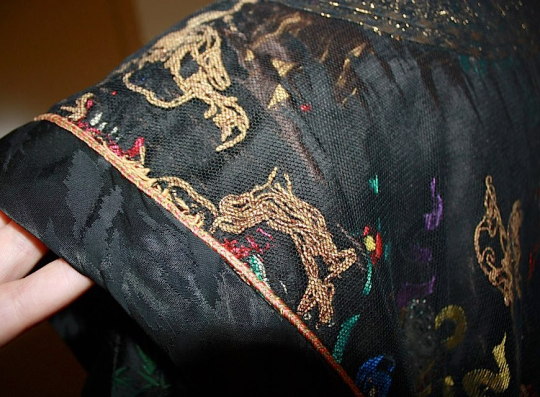
A last aspect is of course that by using elder textiles you may put specific meaning-bearing motifs on which ideally shouldn't be there. The beautiful embroidered Indian fabric with elephants and swastikas - in India a symbol of the sun and good luck - which appeared in an unfortunate Danish Elissa skirt is a good example. Luckilly the costume crew knew what they were doing by including the five bats - for good luck - on this Broadway Mandarin robe:

If you plan on making your own costume, I would say: Create the base of a Chinese brocade (silk or synthetic) with predominantely black or dark blue base and polychrome pattern. As an inspiration, here's the robe, collar and tabard - fairly undecorated - in making for Scott Davies (top) and Ben Lewis (bottom) in West End, with photos generously shared by head-of-costume Ceris Donovan:


For the back: Go for a main motif, and build everything around that. And layer! Gems upon trims upon embroideries upon fabrics. The more structure, embroidery, couching and details the various materials has, the better. And then add some on top of that.
Note that it varies if a production do both the robe, cloud collar and tabard. Some production only do two of these, some do all three. But whatever the case, the costume with hat should create angles, texture and lines that makes him stand out from the previous scene, where he wore black and white and tight-fitting clothes.
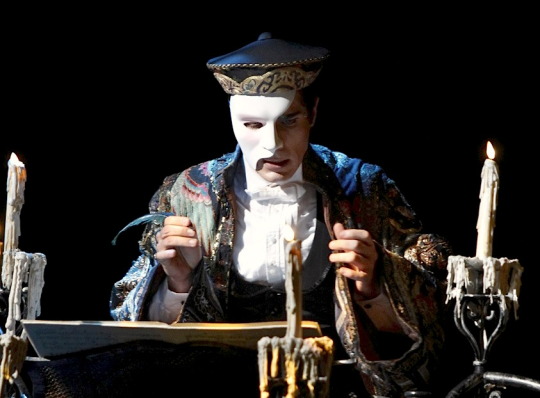
In West End I think they source it in the many amazing fabric shops in Brixton and Soho, including Borovicks, as well as antique dealers. For Broadway I know a lot was bought in the fabric district in NYC. Other productions may be equipped with fabrics and trims from these, or they may source their own materials locally. I also noticed that the Chinese (left) and Japanese (right) productions tend to use more red and purple fabrics for their versions, which I would think was also locally sourced:

So yeah. As many answers as there are versions out there...
61 notes
·
View notes
Text
#affordable digital marketing services#high rate digital marketing services company in India#low cost digital marketing services in world#Ranking Rapid
0 notes
Text
#education#iirf#iirf ranking#top 10 universities in india#top universities in india#best universities in india#good universities in india#best universities in the world#iirf university ranking 2024
0 notes
Text
Brief Overview On The India’s Ranking In World Bank’s Doing Business Report 2018

In the recent issue of World Bank’s Doing Business Report 2018, India’s ranking jumps 30 positions from 130th in 2016 to the 100th spot in 2017 in the World Bank’s — Ease of Doing Business Index 2018. India has seen the improvement in 6 out of 10 indicators on the World Bank’s Doing Business Report 2018. This jump can be attributed to major improvement in significant parameters such as starting a business, dealing with construction permits, resolving insolvency, getting electricity and getting credit, among other parameters.
This comes as a positive news after 2016, when India moved up only by a single position from 131 to 130.5. Additionally, India’s combined or Distance-to- Frontier (DTF) score also witnessed a spike — from 56.05 in the previous year to 60.76 now, which reflects the country has improved in absolute terms as well.
“Among the 190 countries surveyed in World Bank’s Doing Business 2018 report, India saw the biggest rise in its ranking. While the rise in India’s ease of doing business rank from 130th in 2017 to 100th in 2018 is welcome move. This jump can be attributed to major improvement in significant parameters such as starting a business, dealing with construction permits, resolving insolvency, getting electricity and getting credit, among other parameters” The main area of parameters/reforms that helped India jump up 30 places in World Bank’s Doing Business Report 2018 :
Dealing with Construction Permits:
The introduction of online single window has reduced the number of procedures as well as the time required to obtain a construction permit. This streamlined process has contributed significantly to this unprecedented jump in overall rankings
Resolving Insolvency:
The Insolvency and Bankruptcy Code, 2016 — the landmark reform that helps dissolve businesses without much complication — has been an instrumental contribution in building a conducive business climate.
India has moved up 33 places from the previous year with regard to resolving insolvency in this year’s Doing Business Index. This drastic jump can be credited to the enactment of the landmark Insolvency and Bankruptcy Code that was approved by Parliament in May 2016, with certain provisions imposed in August 2016 to bring India’s legal and institutional machinery in line with the global standards for dealing with the issue of debt default. With the enactment of the IBC, there has been renewed interest in entrepreneurship and a positive shift in the access to credit. All the laws related to reorganisation and insolvency Resolution of various entities, such as, companies and limited liability entities, unlimited liability partnerships and individuals have been consolidated to ensure a clear, coherent and speedy process.
Getting credit:
This is one of the three indicators in which India figures among the top 50 economies, registering a rank of 29. This is primarily due to strengthening of legal rights of borrowers and lenders with respect to secured transactions.
India has strengthened access to credit by amending the rules on priority of secured creditors outside reorganization proceedings and adoption of a new insolvency and bankruptcy code that introduced a reorganization procedure for corporate debtors. Secured creditors, such as…
Read More: https://www.acquisory.com/ArticleDetails/61/Brief-Overview-On-The-India%E2%80%99s-Ranking-In-World-Bank%E2%80%99s-Doing-Business-Report-2018
#world bank#business report#india ranking 2018#world bank business#world business ranking#business ranking
0 notes